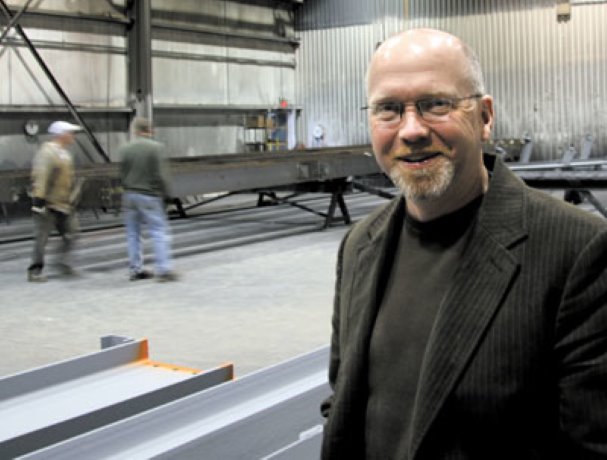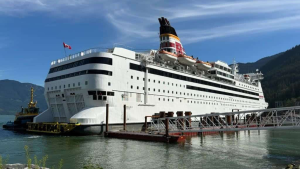A 45-year-old steel company offering miscellaneous products transformed itself into a structural steel provider to compete for larger construction jobs.
Onario firm used recruitment to specialize in structural steel
ILDERTON, ON
How does a steel business, that, for three decades, focused on offering miscellaneous products, transform into a structural steel provider that competes for larger construction jobs?
For Spencer Steel, near London Ontario, the answer lies in its employees, says president and chief executive officer, Rick Spencer.
Back in the late 1980s, the company, started in a 2,500-square-foot London garage in 1962 by Spencer’s father, Dick, was beginning to strain at its miscellaneous roots. To help cope with the demand, the company hired draftsman Ed Gray.
“He was really monumental, he was a big person [influence] in us going towards structural steel,” says Rick Spencer, noting Gray — who still works with the company — had a background in structural steel drafting.
Soon after, the Spencers recruited another employee with a structural steel background and by the early 1990s, when Rick took over from his father, the transformation was in full swing.
Shifting to structural steel was a natural progression seen in many such companies, says the younger Spencer.
“They simply become big and miscellaneous and then all of a sudden there’s a small miscellaneous guy out of his garage, like we once were, you’re competing with them.”
Choices have to be made, he says, “to get to that next level.”
Last year, the company celebrated its 45th anniversary.
Along with the decision to specialize there have been some other changes, such as a move of its operations in the late 1990s to a 35,000-square-foot building in the small community of Ilderton, just north of London. But specializing has had the greatest impact.
Spencer admits changing directions has had its ups and downs, which at times have been extreme.
These have inspired a company a philosophy of doing business as spare and lean as the product it offers.
“We were in the States (in the 1990s doing business) and we had some bad experiences in the States with the dollar changing and just some issues,” he says.
“It taught us to have to really understand you’ve got to cover the costs, you have to be able to flex is and that’s one thing that we push all the time.
“Keep your overhead as low as you can.
The approach has meant surviving the tough times and maximizing profits in the good ones, he says.
Today, he credits this philosophy with being the key to the company pulling in $25 million in sales last year and being able to maintain a staff of between 85 and 110.
“The structural business is very very competitive,” Spencer points out, noting that there’s little opportunity to create services or products to add value to the primary product on offer.
“They will provide installation services, something he says is slightly different from his competitors (the company buys its steel wholesale from the U.S. then details and fabricates it in-house), but other than that, it’s mainly about price and the ability to meet delivery deadlines.
The company has supplied steel for some significant regional projects, such as Covent Garden Market, a public market in London’s downtown, the TD Waterhouse Stadium located in the University of Western Ontario and a London Regional Health Sciences centre expansion.
A 700,000-square-foot industrial facility recently built in London is another on that list.
The company has also become a player on the provincial scene, with about 80 per cent of business now taking place in the GTA, says Spencer.
Most recent projects in that area include a a 550,000-square-foot commercial facility and a 475,000-square-foot Home Depot distribution centre in Vaughn.
“We really, really try to hit on bigger projects — if I can get jobs above $1.5 million — that’s where we’re really competitive and really good,” Spencer says.
In fact, to date, the company has supplied steel for the construction of 35 Home Depots in Canada and have also supplied steel for one WalMart.
Spencer says maintaining operations at a distance from its primary centre of business hasn’t shown itself to be a problem.
And while technology has changed over the years, that’s not really a challenge either.
The primary challenge remains competition with price being the major driver, he says.
Labour shortages is another issue affecting all of those in the industry, he says.
“Having skilled tradesmen who can lay out the steel and do that stuff properly is tough.”











Recent Comments
comments for this post are closed